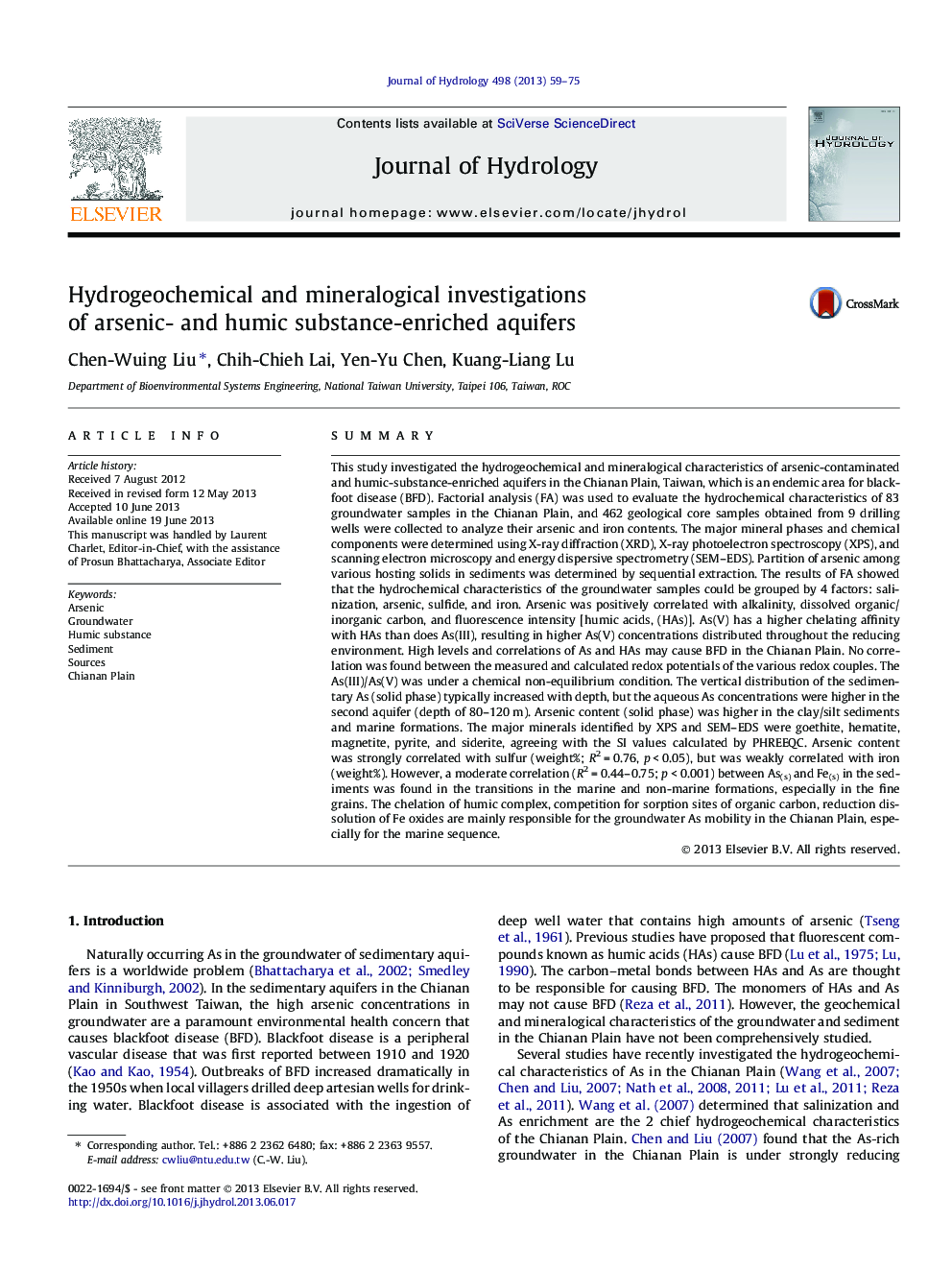| کد مقاله | کد نشریه | سال انتشار | مقاله انگلیسی | نسخه تمام متن |
|---|---|---|---|---|
| 6413557 | 1629950 | 2013 | 17 صفحه PDF | دانلود رایگان |
- Arsenic contaminated and humic-substance-enriched aquifers in the Chianan Plain were investigated.
- Aqueous As was closely correlated with TOC, Alk, fluorescence intensity and Eh.
- Arsenic species were under non-equilibrium chemical conditions.
- Iron oxyhydroxides and sulfides contained the major portion of As.
- As-rich black shale is the major source of As in the Chianan Plain.
SummaryThis study investigated the hydrogeochemical and mineralogical characteristics of arsenic-contaminated and humic-substance-enriched aquifers in the Chianan Plain, Taiwan, which is an endemic area for blackfoot disease (BFD). Factorial analysis (FA) was used to evaluate the hydrochemical characteristics of 83 groundwater samples in the Chianan Plain, and 462 geological core samples obtained from 9 drilling wells were collected to analyze their arsenic and iron contents. The major mineral phases and chemical components were determined using X-ray diffraction (XRD), X-ray photoelectron spectroscopy (XPS), and scanning electron microscopy and energy dispersive spectrometry (SEM-EDS). Partition of arsenic among various hosting solids in sediments was determined by sequential extraction. The results of FA showed that the hydrochemical characteristics of the groundwater samples could be grouped by 4 factors: salinization, arsenic, sulfide, and iron. Arsenic was positively correlated with alkalinity, dissolved organic/inorganic carbon, and fluorescence intensity [humic acids, (HAs)]. As(V) has a higher chelating affinity with HAs than does As(III), resulting in higher As(V) concentrations distributed throughout the reducing environment. High levels and correlations of As and HAs may cause BFD in the Chianan Plain. No correlation was found between the measured and calculated redox potentials of the various redox couples. The As(III)/As(V) was under a chemical non-equilibrium condition. The vertical distribution of the sedimentary As (solid phase) typically increased with depth, but the aqueous As concentrations were higher in the second aquifer (depth of 80-120 m). Arsenic content (solid phase) was higher in the clay/silt sediments and marine formations. The major minerals identified by XPS and SEM-EDS were goethite, hematite, magnetite, pyrite, and siderite, agreeing with the SI values calculated by PHREEQC. Arsenic content was strongly correlated with sulfur (weight%; R2 = 0.76, p < 0.05), but was weakly correlated with iron (weight%). However, a moderate correlation (R2 = 0.44-0.75; p < 0.001) between As(s) and Fe(s) in the sediments was found in the transitions in the marine and non-marine formations, especially in the fine grains. The chelation of humic complex, competition for sorption sites of organic carbon, reduction dissolution of Fe oxides are mainly responsible for the groundwater As mobility in the Chianan Plain, especially for the marine sequence.
Journal: Journal of Hydrology - Volume 498, 19 August 2013, Pages 59-75
